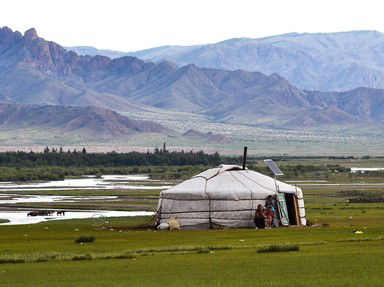Quiz Answer Key and Fun Facts
1. What's the name of the tents used by the nomadic peoples of the Mongolian steppes?
2. Amarbayasgalant Khiid, one of Mongolia's most important religious centers, serves which purpose?
3. Genghis Khan was the founder of the Mongol Empire, the largest contiguous empire the world has ever seen. However, 'Genghis Khan' was the man's title, not his name. What was Genghis Khan's birth name?
4. After Genghis Khan's death his son and successor Ögedei Khan founded a new city which served as the capital of the Mongol Empire between 1235 and 1264 CE. What is the name of the old capital of the Mongol Empire?
5. Which significant discovery did Roy Chapman Andrews make in the Gobi desert in the 1920s?
6. Which mountain range is located on the convergence of the borders of Mongolia, China, Russia and Kazakhstan?
7. Which of the following statements is correct?
8. Which species of wild horses, named after the explorer who first discovered them, is home on the Mongolian steppes?
9. The most important festival held in Mongolia is the Naadam festival in which participants compete in three different events. Which sport is NOT practiced during the Naadam festival?
10. A favorite drink of the Mongols is Airag. If you can stomach a glass of airag, what are you having?
Source: Author
AlonsoKing
This quiz was reviewed by FunTrivia editor
agony before going online.
Any errors found in FunTrivia content are routinely corrected through our feedback system.

